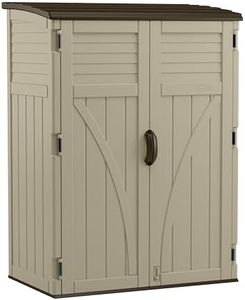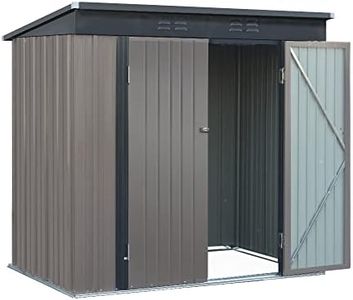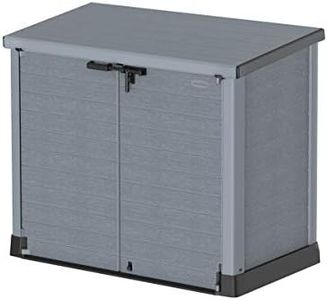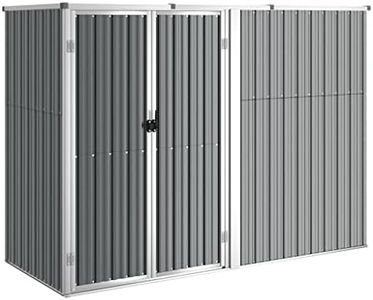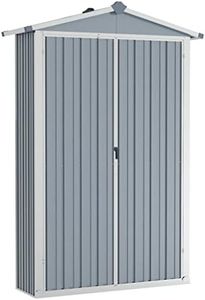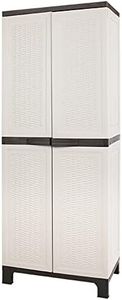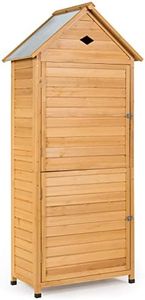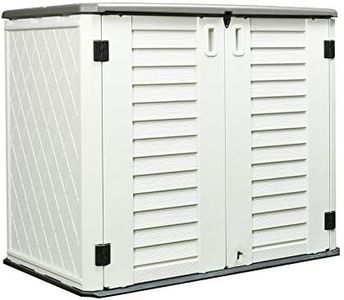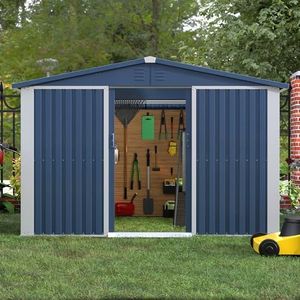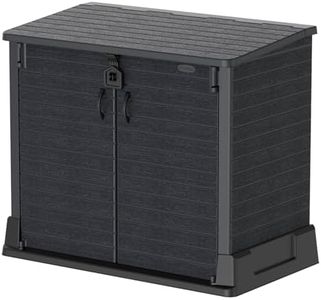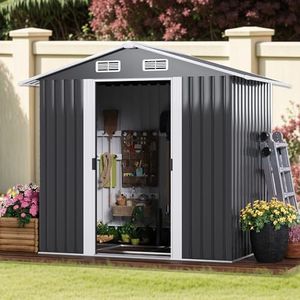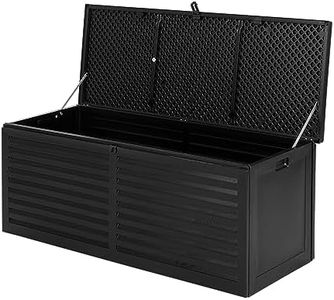We Use CookiesWe use cookies to enhance the security, performance,
functionality and for analytical and promotional activities. By continuing to browse this site you
are agreeing to our privacy policy
10 Best Storage Sheds
From leading brands and best sellers available on the web.By clicking on a link to a third party's website, log data is shared with that third party.
Buying Guide for the Best Storage Sheds
Picking the right storage shed is all about organizing your outdoor space and protecting your belongings from the elements. Before you start shopping, consider what you plan to store, how much space you have in your yard, and any local rules about structures on your property. A good storage shed should be durable, weather-resistant, and fit well both aesthetically and functionally in your space.SizeThe size of a storage shed refers to its overall dimensions, which determine how much you can store inside. This is crucial because buying a shed that's too small may lead to clutter, while one that's too large might not fit your outdoor area or could be unnecessarily bulky. Shed sizes often range from small (3x5 feet) for tools, to medium (6x8 feet) for bikes and garden equipment, up to large (10x12 feet or larger) for lawn mowers or even workshop spaces. It’s important to measure your available outdoor area and think about both what you need to store now and in the future. If you only need space for a few garden tools, a small size will suffice, but if you have larger equipment or want extra space for future needs, a bigger shed is a better choice.
MaterialStorage sheds are commonly made from wood, metal, or plastic/resin. The material affects the shed's durability, maintenance needs, and appearance. Wooden sheds are classic and can be painted, but require regular upkeep. Metal sheds are sturdy and resistant to pests, but may be prone to rust if not treated. Plastic sheds are light, low-maintenance, and weather-resistant, though some may find them less attractive. To choose the best material for you, consider the weather in your area, your willingness to do maintenance, and the look you prefer for your yard.
Roof StyleThe roof style determines not only how the shed looks, but also how it handles rain, snow, and debris. Typical roof styles include flat, gable (pointed), and sloped. Flat roofs are simple but may not handle heavy rainfall as well. Gable roofs shed rain and snow more easily and provide additional headroom, while sloped roofs are practical for smaller spaces. If you live in a rainy or snowy region, a gable or sloped roof will help prevent water buildup. For dry areas or space-saving needs, a flat roof may suffice.
Doors and AccessThe type and size of the shed’s doors affect how easily you can move items in and out. Sheds may have single, double, or even sliding doors. Narrow doors are fine for small tools, but if you need to store large equipment like lawn mowers or bikes, wider double doors are more practical. Also, consider if you need windows for visibility or ventilation. Think about what objects you'll need to move and choose a door style and size that will make access easy and convenient.
FlooringSome sheds come with a built-in floor, while others require you to add your own base. The floor affects stability, moisture resistance, and comfort. Plastic or wood floors keep your belongings off the ground and help protect from ground moisture and pests. If you plan to store very heavy equipment, check for reinforced or heavy-duty floors. If your shed will be on uneven ground, look for a model with a sturdy integrated floor, or plan for a proper foundation.
Assembly and MaintenanceSheds vary in how easy they are to assemble and care for over time. Some have simple snap-together panels, while others require more advanced tools and skills. A complicated assembly might need professional help. Lower-maintenance materials like resin or metal are ideal if you want to minimize upkeep, while wood will need painting or sealing every few years. Consider how much time and effort you're willing to put into building and maintaining your shed when making your selection.
